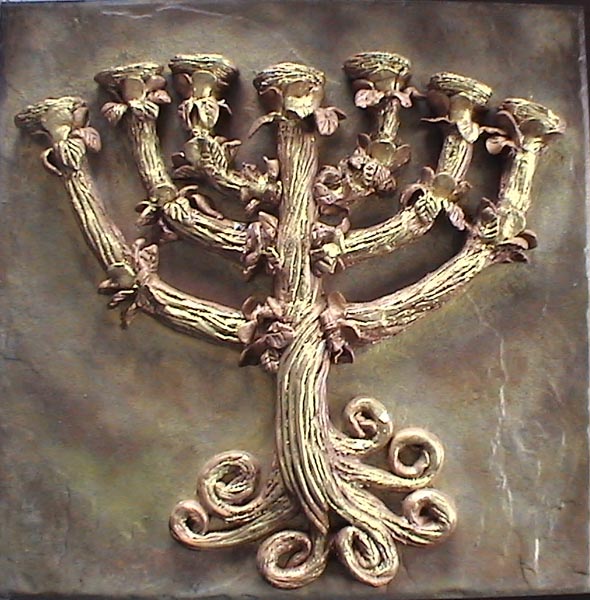The Almond And The Candelabra
HaShem gives the Jewish nation the instructions of building the Mishkan as well as the Ark of the Covenant in Parashat Terumah. We have already discussed the Ark of the Covenant, so now let’s look at a different semiotic nugget buried in the text.
In the Mishkan is the candelabra, the menorah, which is the same menorah style that was maintained in the Beis Hamikdash. We do not light this menorah at any time nowadays because its sole use is for the Temple. Today’s menorahs we use for Chanukah are known as Hanukkiahs since they are nine eight working and one resting) candelabras, instead of seven (six working and one resting).
Rashi notes that when HaShem commanded the creation of this candelabra, not even Moshe Rabbenu knew how to forge it. Out of Moshe’s despair, HaShem commanded for the ingot to be thrown into the fire and HaShem returned it, forged to perfection. In this we are given the concept that all HaShem asks of us is that we begin the work and then He will assist us with its completion. We also witnessed this call of faith in our experience of crossing the Red Sea – Nachshon had to dive/walk into the waters up to his hair before the waters congealed and HaShem withdrew them.
There is more for us to learn of this though, and is actually seemingly a footnote of the text. The candelabra is designed with almond rosebuds. This is not the only time we see almonds present, either. We also come across almonds with Aaron’s staff in the Ark of the Covenant – an almond bud set his staff apart from the other leaders.
What’s the big deal with an almond, though? As Len Sweet explained to me in September 2016, the almond is the mandorla. What is a mandorla? A mandorla is the “middle part” of a Venn Diagram.
We use Venn Diagrams to help us compare two items to see what they have in similar. Thus, the mandorla is not just the “meeting in the middle,” but rather the marriage of the two.
The mandorla imagery specifically used with the candelabra and with Aaron’s staff teach us a very specific lesson – that we are to live a mandorla life (one in harmony, not balance) between the physical and the spiritual. The physical world (following mitzvot) in harmony with the spiritual world (transformed by mitzvot) give us the essence of the Jewish life (fulfilling mitzvot). Judaism is not something lived out as only a practical or only a spiritual pursuit – it is uniquely designed to be both constantly practical and infinitely spiritual as a consumption of all of our efforts.
True Jewish living is mandorla living. Kabbalah teaches us that it rains because we pray for rain. The world continues because HaShem renews creation at every instant. Our words have far reaching impacts (there is a Talmudic tale about one rabbi speaking a curse and another rabbi dying at that moment as a result).
Mandorla living is seeing beyond the tzitzis, tefillin, kippot, sheitels, and other mitzvoth.
Mandorla living is being shomer but seeing its purpose and impact in the spiritual realm.
Mandorla living is having a proper kevana at all times.

